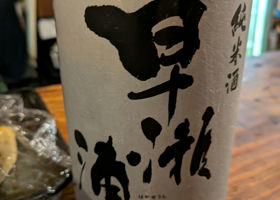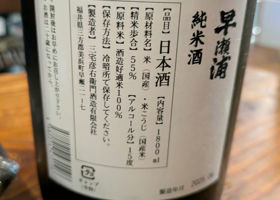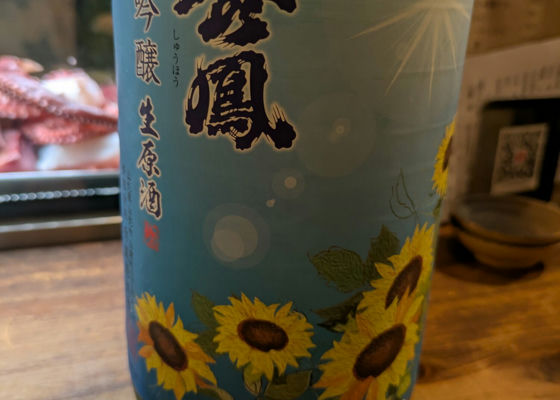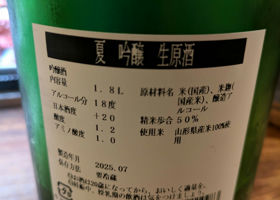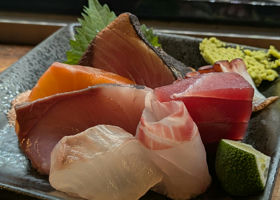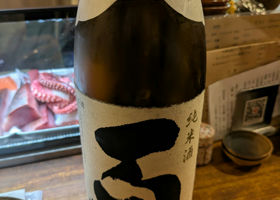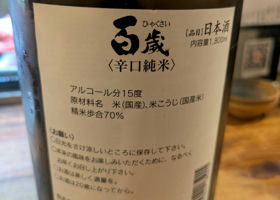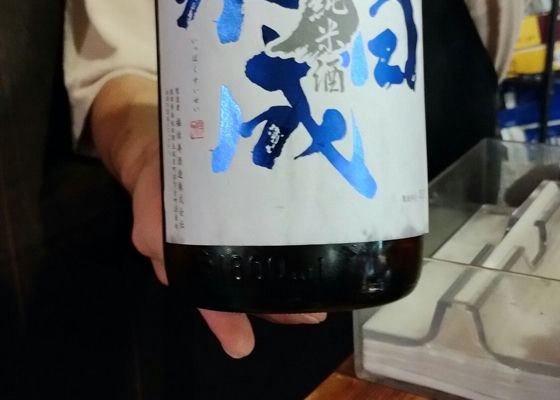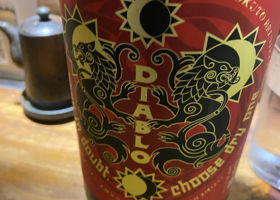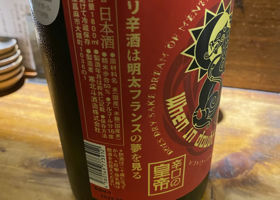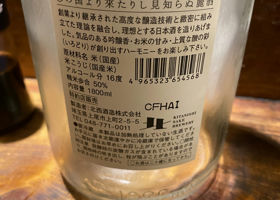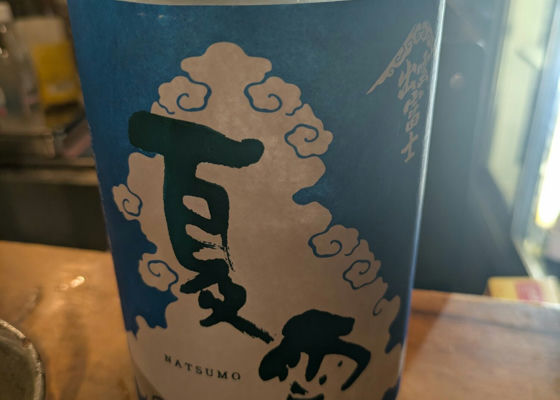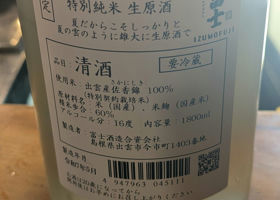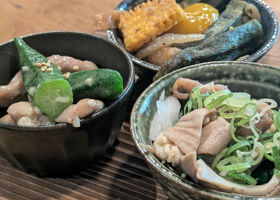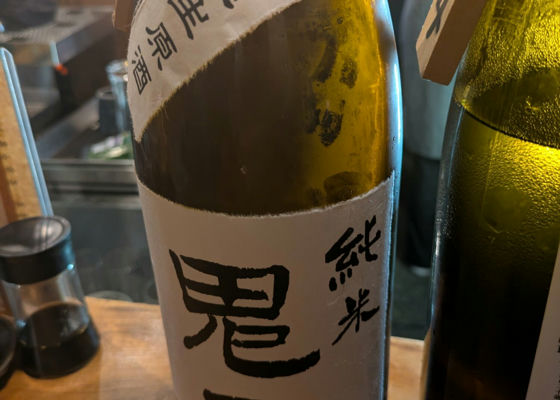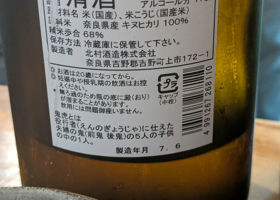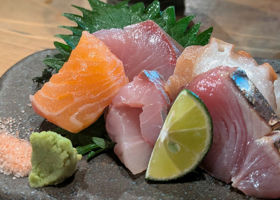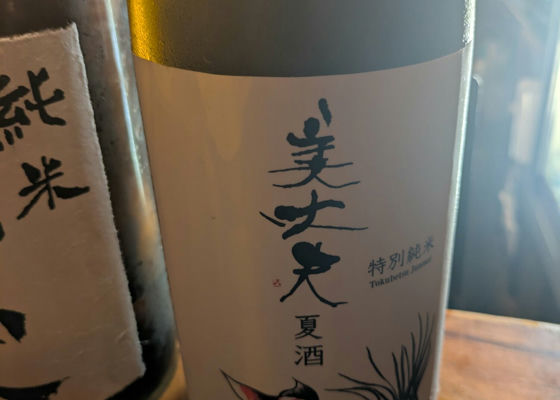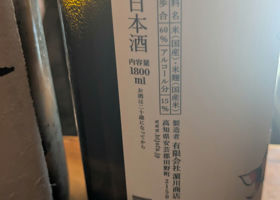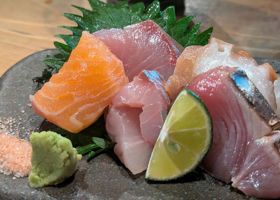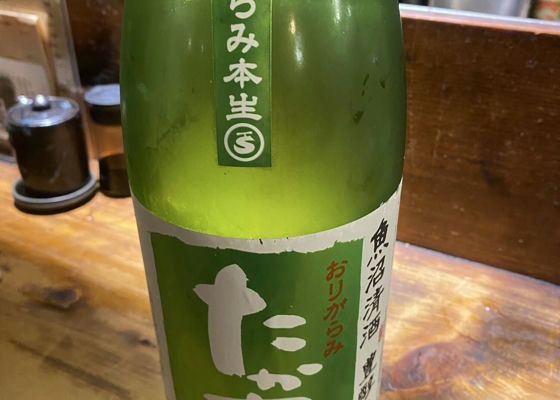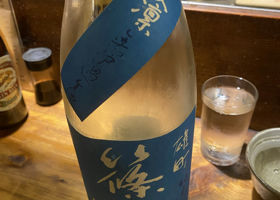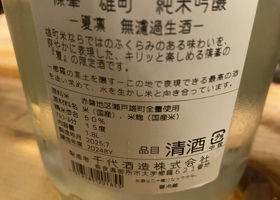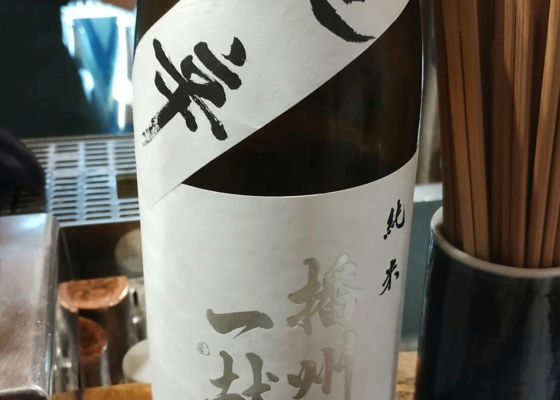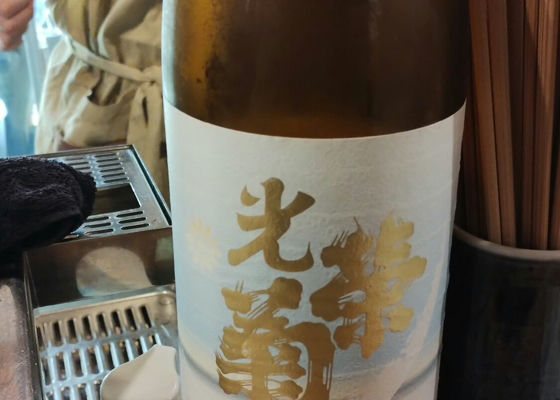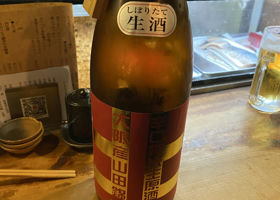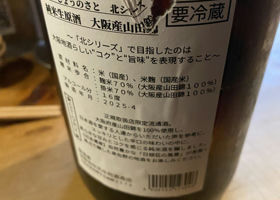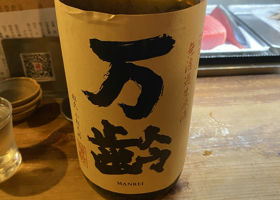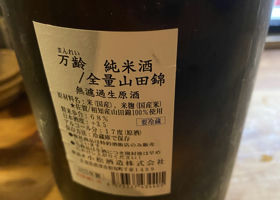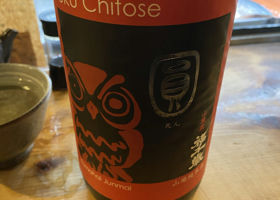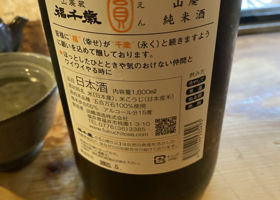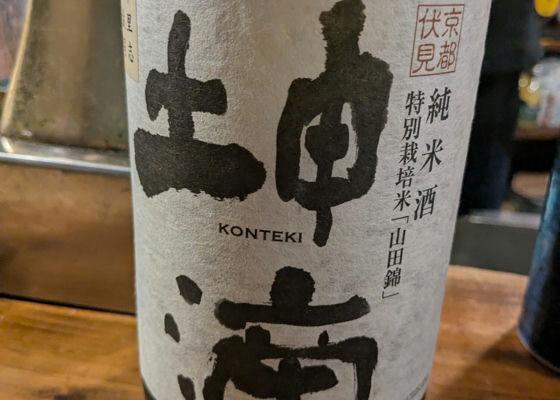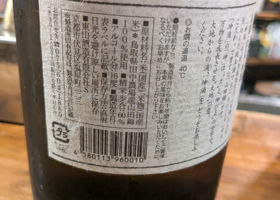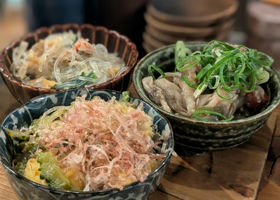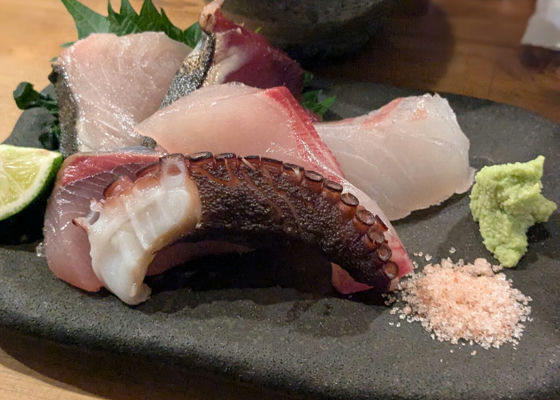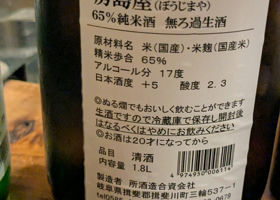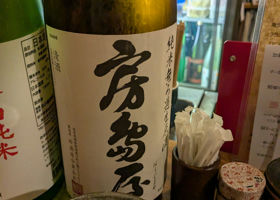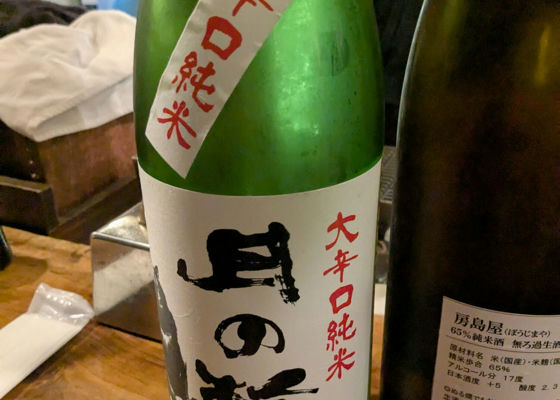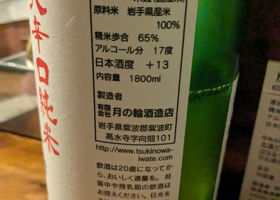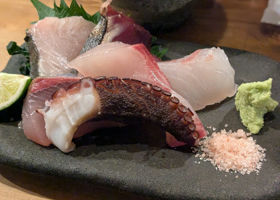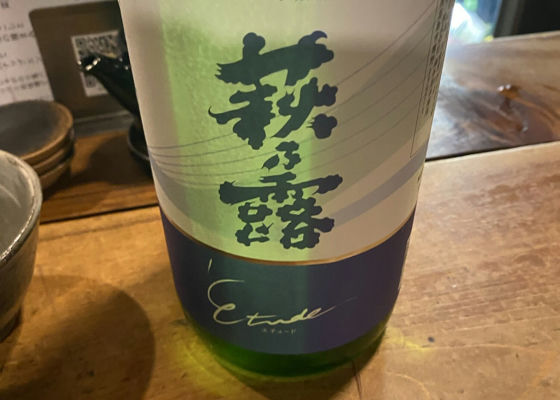Timeline
たけさんSpeaking of Hayaseura, I really liked it the first time I saw it, but after that, every time I saw it, I thought it was a little too much and said, "It's not what I expected...! I had been avoiding Hayaseura for a while, but then I found a basic junmai that I had never had before, so I asked for it.
I like this one!
It is my favorite type of food sake. It is elegant, mellow and reserved as if it were an akiagari, but it has a core strength that tells you "that's not right" when you get it wrong.
If Kaygetsu is like Kenshiro, this is like Toki.
If Kaygetsu is like Kenshiro, this is like Toki. It is a wonderful food sake that is the twin of Kaygetsu in the mildly umami category. たけさんAlthough it is a summer sake, the acidity and sweetness are moderate and clean, probably because it is a honjozo.
Although it has a high alcohol content, it does not have a raw or unpasteurized taste, and is dry and refreshing with just the right amount of umami.
There is no particular taste that I would say is bad or good.
It is a sake like a gym, where "the lack of individuality is the individuality". たけさんIt has a hard taste with a firm pungency and a good straight flavor, but it has a unique aroma after you put it in your mouth.
It has a unique aroma in the mouth. The aroma lingers until the end.
It is a masculine sake that is unique but not glamorous, and I would even call it simple.
I wonder if this sake's partner would be arame or mezame. KAWASpicy?
It's like water.
It's really like water.
No peculiarity, no flavor. KAWALight and refreshing.
A little sweetness. たけさんA mass of acidity and umami.
This is unexpected for a Shimane sake.
It does not have the gravity of Nara sake, and it does not have a beginning, middle, or end, but rather a flat, easy-to-understand taste that is clean from start to finish.
It is not bad, but if there is another good sake, I will drink that one. たけさんThe umami and acidity came right from the first sip, and while it was very much like Nara sake, it also had a slightly bitter taste that was similar to that of Doukan.
This is the first time I have had Onitora, but it is a safe and reliable umami sake that does not disappoint. たけさんIt has a sweet flavor and a unique acidity, with an original aroma that for a moment resembles glue.
The flavor quickly fades away, leaving behind a slightly bitter and pungent taste.
It is delicious, but it is neither an aperitif nor a mid-meal drink, and its unique flavor makes it difficult to use. KAWAFizzy and shiny.
Slightly bitter. Slight melon flavor. KAWARefreshing as a summer sake, with a tangy and spicy taste, it is delicious👍. KAWADelicious with fruity sweetness. KAWAfull-bodied flavor
delicious KAWATossed and a little spicy. たけさんThis is unique.
Mouthful of "nothing".
Mellow and tasty water.
It is not a fresh and clear water, but a mellow and chunky water.
The alcohol taste comes out after the middle of the bottle, but there is no moment when you can feel the taste of the water.
Would it taste better if it were heated up?
No, it probably just gets warmer...
Hmmm, I wonder what the brewer was thinking when he made this sake. たけさんThe moment you put it in your mouth, you will be hit with a unique but familiar aroma.
But I can't remember what kind of aroma it was. What was it?
It has a strong sense of unfiltered sake, but I can't really taste the raw flavor.
The acidity is not so great, and the umami is the key to the flavor.
The taste is not too flashy, and the astringency tightens it up at the end, making it a compact unfiltered sake in a good sense.
It seems to be easy to match with all kinds of obanzai. たけさんAs if to say that this is a "big hot" sake, it is crisp and piquant from the moment it enters the mouth, but it is not hot and spicy all the way through.
The umami flavor fades away moderately, and the end result is a very dry taste.
It is not just spicy, but spicy with flavor.
Combined with the aroma of the sake itself, rather than the ginjo aroma, it is a very hard-core dry sake.
This type of sake may be rare nowadays.
It is similar to Kochi sake in that it can be easily matched with everything from sashimi to simmered dishes. KAWAUnique sweetness and acidity
Different from others RecommendedContentsSectionView.title
